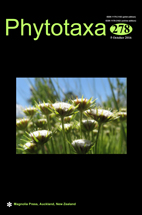Abstract
I examined representatives of the genus Trachelomonas from two water bodies in eastern Poland. Using both light and scanning microscopy, a total of 47 taxa were recorded during two years of study. Among the 47 taxa, 7 were new to Poland (T. botanica var. minor, T. manginii, T. obovata var. klebsiana, T. zorensis, T. mirabilis var. obesa, T. raciborskii var. incerta and T. woycickii f. pusilla). All taxa found were briefly described and originally illustrated, and I added taxonomical comments to almost all of them. These taxonomical comments may be helpful in further research because at present, taxonomical identification of species during environmental research is still based on the morphology of trachelomonad envelopes. Taxonomists around the world use key books for identification, which were written based on (often old) data concerning the external structure of envelopes. My study provided valuable information on similarities and differences between taxa that appear very similar. I also provided information on the ecology and biogeography of the reported taxa. For three of the taxa (T. volvocinopsis f. volvocinopsis, T. volvocina var. volvocina, T. hispida var. hispida), which were characterised by the highest frequency of occurrence during the studies, I examined and analysed their presence in different abiotic conditions (both water reaction and water temperature). The data showed that the taxa preferred alkaline water conditions, with the median pH for the species ranging from 7.9 to 8.8. T. volvocinospis occurred in the broadest pH range and preferred cooler waters, whereas T. hispida var. hispida was most often observed in warm water.

